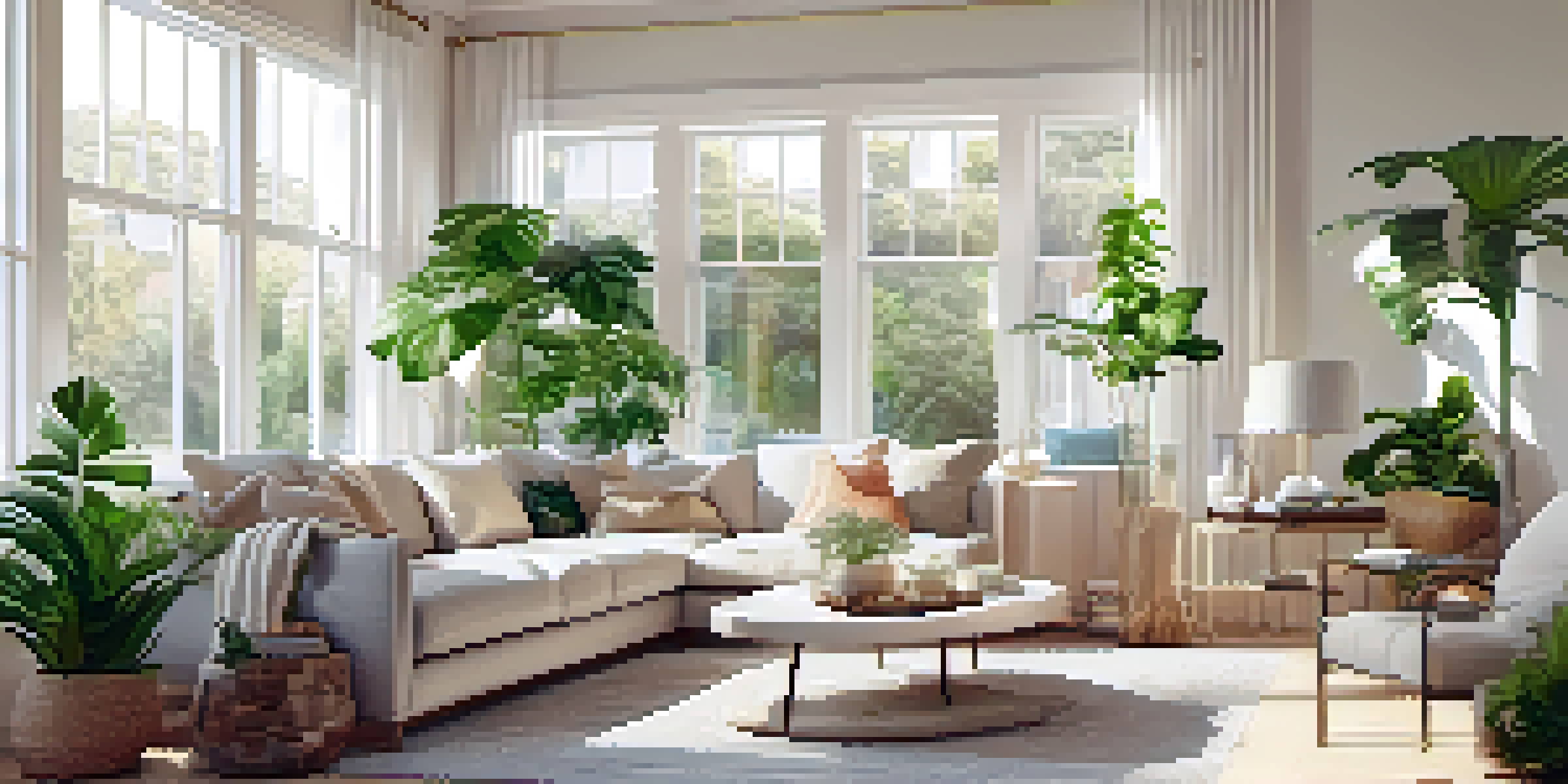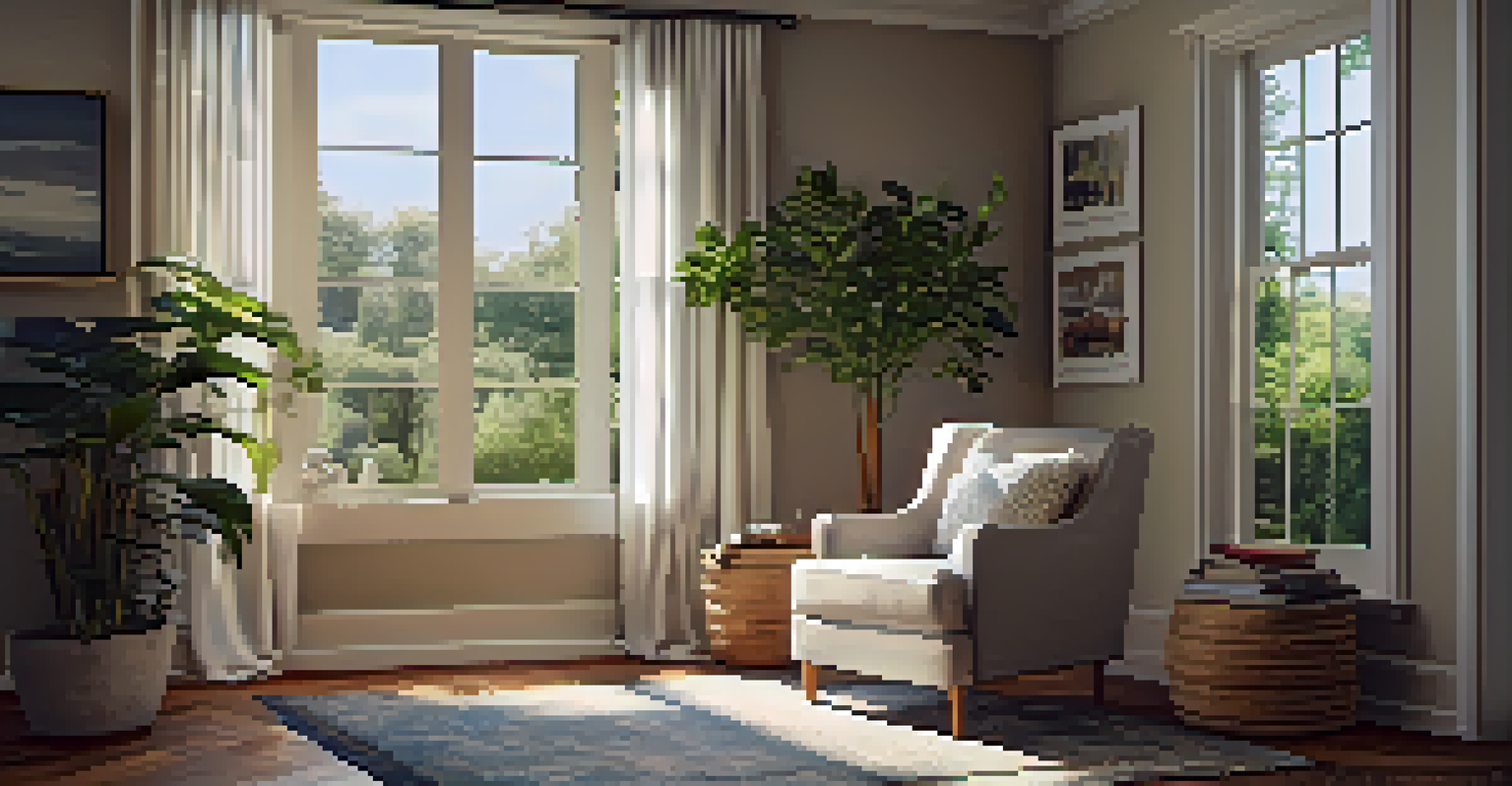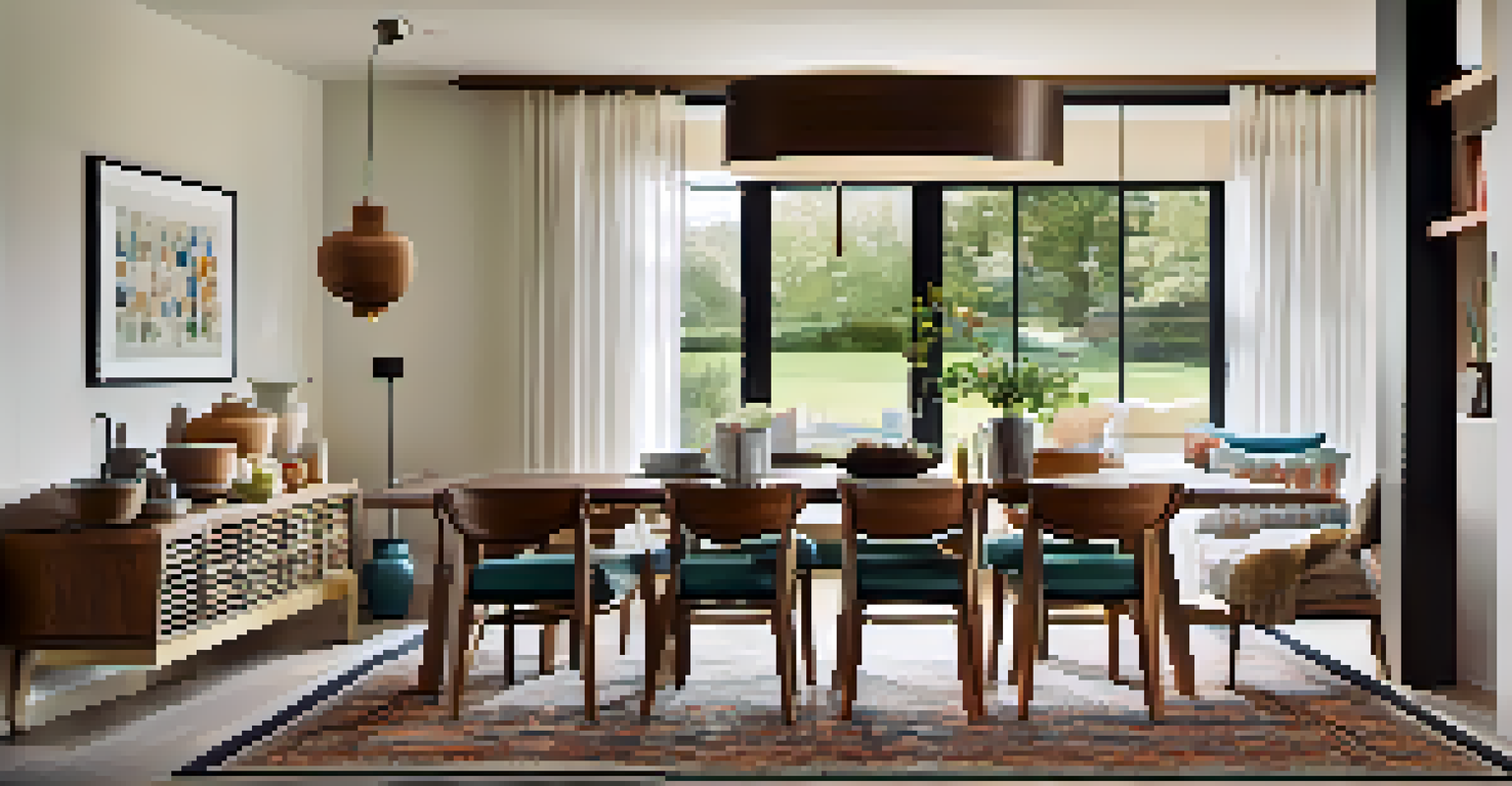Bright and Airy Spaces: Trends for Open Living Areas

Understanding the Appeal of Open Living Areas
Open living areas have become increasingly popular, and it's easy to see why. They offer a sense of space and fluidity that traditional layouts often lack. Imagine hosting friends in a room where the kitchen, dining, and living areas flow seamlessly into one another, creating an inviting atmosphere.
The best rooms have something to say about the people who live in them.
This design choice fosters social interaction, allowing everyone to feel connected. Whether you're preparing a meal or enjoying a movie night, the openness encourages engagement and togetherness. It’s like having a spacious hug that wraps around your home.
Moreover, open spaces can make smaller homes feel larger and more expansive. By eliminating walls and barriers, you allow natural light to bounce freely, enhancing the overall brightness and warmth of your living area.
Maximizing Natural Light for a Bright Space
One of the key trends in creating bright and airy spaces is maximizing natural light. Large windows, glass doors, and skylights can transform your living area into a sunlit haven. Picture waking up to sunlight streaming in, illuminating your home and boosting your mood.

The use of reflective surfaces, such as mirrors and light-colored walls, can also enhance the brightness of a room. By bouncing light around, these elements create an illusion of space and openness. It's like adding a pinch of magic to your environment!
Embrace Open Living for Connection
Open living areas create inviting spaces that foster social interaction and a sense of togetherness.
In addition, opting for sheer curtains instead of heavy drapes can keep your space feeling open and light. This simple change allows sunlight to filter in while providing a sense of privacy, striking the perfect balance between comfort and brightness.
Choosing a Light Color Palette
Color plays a significant role in creating the bright and airy feel that open living areas are known for. Soft, neutral colors like whites, creams, and pastels can make a space feel larger and more serene. Think of your living area as a canvas where light colors serve as the backdrop for your life.
Light is the magical ingredient that transforms a house into a home.
Incorporating pops of color through accessories or artwork can add personality without overwhelming the openness of the space. Imagine a bright blue vase or a vibrant piece of art that draws the eye without cluttering the environment. It’s about balance and harmony.
Additionally, using varying shades of the same color can create depth while maintaining a cohesive look. This technique can help define areas within an open space, making it feel organized and inviting.
Incorporating Indoor Plants for Freshness
Indoor plants are a fantastic way to enhance the brightness and freshness of your living area. They not only purify the air but also add a touch of nature that softens the modern aesthetic. Imagine a lush fern or a vibrant pothos cascading from a shelf, bringing life to your space.
Choosing plants that thrive in indirect light can ensure your living area remains bright and inviting. Options like snake plants or peace lilies are not only low-maintenance but also perfect for adding a pop of green without requiring direct sunlight.
Maximize Natural Light Effectively
Incorporating large windows and reflective surfaces can enhance brightness and make your home feel more expansive.
Incorporating plants can also create visual interest and break up large areas, helping to define different zones within an open concept space. It’s an easy way to blend nature with design, creating a harmonious environment.
Furniture Selection for Open Spaces
Choosing the right furniture is crucial in maintaining an airy atmosphere in open living areas. Opting for lightweight, multi-functional furniture can enhance flexibility and flow. Picture a sleek coffee table that doubles as storage or an ottoman that can be moved around for extra seating.
Arranging furniture to promote conversation and movement is also key. Avoid bulky pieces that can block sightlines; instead, consider low-profile sectional sofas or chairs that encourage interaction. This arrangement fosters an inviting environment where everyone feels included.
Additionally, using area rugs can help delineate spaces without the need for walls. A well-placed rug can define the living area from the dining space, creating a sense of structure while maintaining an open feel.
Lighting Choices That Enhance Bright Spaces
Lighting is essential in creating a bright and airy space, especially in areas with less natural light. Layering light through ambient, task, and accent lighting can provide both functionality and warmth. Imagine soft pendant lights illuminating the dining area while floor lamps create cozy corners in the living space.
Choosing fixtures with a light finish can enhance the overall brightness of the room. Think of brass or white finishes that reflect light and add a touch of elegance without feeling heavy. Lighting should feel like a gentle embrace, enhancing the space rather than overpowering it.
Define Zones with Style and Function
Creating distinct areas within an open space using furniture and decor helps maintain functionality while preserving an airy feel.
Smart lighting solutions, such as dimmers or smart bulbs, can also allow you to adjust the brightness based on the time of day and activity. Flexibility in lighting can transform your living area from a bright, lively space during the day to a cozy retreat in the evening.
Creating Zones for Functionality and Aesthetics
Even in an open living area, it's important to create defined zones for different activities. This can be achieved through furniture arrangement, area rugs, or even lighting. Imagine a cozy reading nook nestled in one corner, complete with a comfortable chair and a small bookshelf—a perfect escape within your larger living space.
Using furniture placement to create pathways and flow can enhance both functionality and aesthetics. It’s like choreographing a dance; each piece of furniture has its unique role, contributing to the overall harmony of the space.

Incorporating different textures and materials can also help define areas while maintaining a cohesive look. Mixing wood, metal, and soft fabrics can create visual interest without overwhelming the senses, making each zone feel purposeful yet connected.